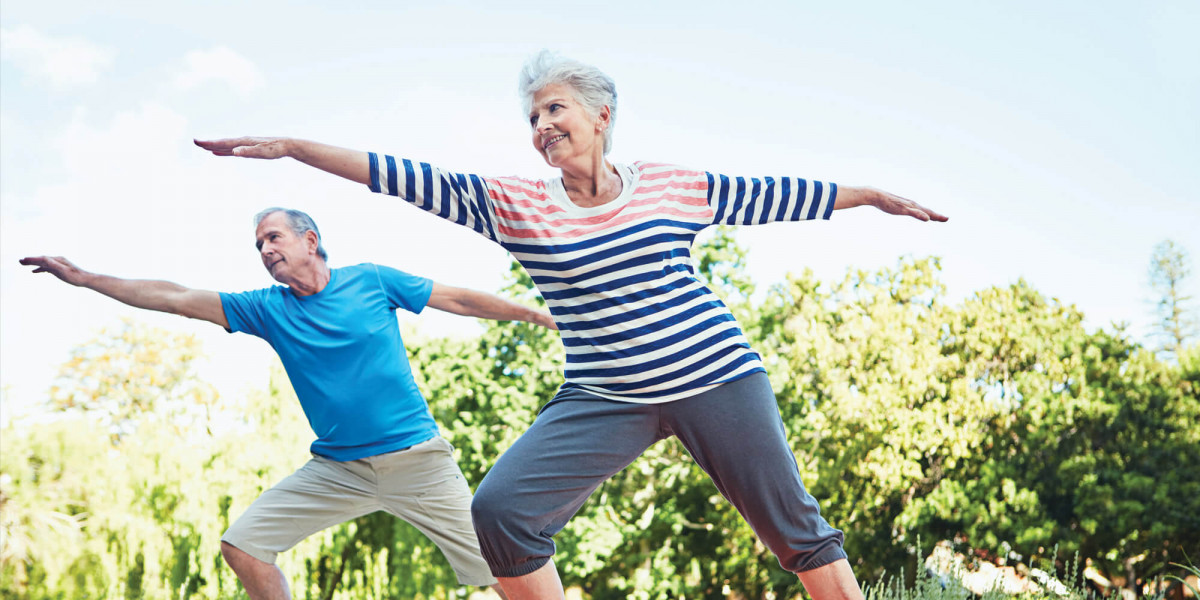One of the best exercises for multiple sclerosis (MS) has always been discussed among healthcare professionals and fitness enthusiasts. For individuals living with MS, a balanced and suitable exercise regimen is vital in maintaining overall health and managing symptoms.
Exercise not only aids in enhancing physical capabilities but also uplifts mental well-being, which is crucial for individuals with MS. This article will explore the best exercises for multiple sclerosis patients and their benefits and provide practical tips for exercising safely.
Table of Contents
Understanding Multiple Sclerosis and Exercise
Multiple Sclerosis is a chronic condition wherein the immune system attacks the protective covering of nerve fibres, causing communication issues between your brain and the rest of your body. This can lead to symptoms such as:
- Fatigue
The most common symptom of MS. It can be debilitating, affecting one’s ability to perform daily tasks.
- Numbness or Weakness
Often occurs in one or more limbs, typically on one side of the body.
- Difficulty with Coordination and Balance
This can affect mobility and the ability to perform exercises for multiple sclerosis safely.
- Problems with Muscle Control
This can make certain exercises for multiple sclerosis more challenging.
Exercise offers numerous benefits for people with MS. According to Dr Hugo Aparicio, a neurologist at Boston Medical Center, “Exercise can have profound benefits for people with MS, both physically and mentally.”
Exercise can be a key component in managing these symptoms. The benefits of the best exercises for multiple sclerosis include:
- Physiological Benefits
Best exercises for Multiple Sclerosis can improve cardiovascular fitness, muscle strength, and mobility. It can also help manage symptoms such as fatigue and muscle stiffness.
- Mental Health Benefits
Regular best exercises for Multiple Sclerosis can boost mood and self-esteem, reduce stress and anxiety, and improve sleep quality.
However, it is essential to take into account certain risks and considerations when doing the best exercises for multiple sclerosis:
- Overheating
MS symptoms may worsen with increased body temperature. Therefore, it’s important to stay cool during workouts.
- Fatigue
Overexertion may increase fatigue levels. Balance best exercises for Multiple Sclerosis with adequate rest.
- Safety
Due to balance and coordination issues, some best exercises for Multiple Sclerosis may carry a higher risk of falls or injuries.
Types of Best Exercises for Multiple Sclerosis
Exercise plays a crucial role in managing symptoms and improving the quality of life for people with MS. Different forms of best exercises for multiple sclerosis cater to various needs, from enhancing cardiovascular endurance to improving strength, balance, and flexibility.
Adapting these best exercises for Multiple Sclerosis to your ability and comfort level is essential. Always remember to consult your healthcare provider before beginning any new exercise regimen.
Aerobic Exercises
Aerobic exercises, also known as cardio exercises, improve heart health, increase endurance, and manage fatigue, a common MS symptom. These exercises involve large muscle groups and are performed for extended periods. Here are some recommended aerobic best exercises for multiple sclerosis:
Walking
Walking is one of the best exercises for Multiple Sclerosis; that works for several muscle groups, improves cardiovascular health, and helps with weight management.
- Stand up straight with your feet hip-width apart.
- Keep your head up, looking forward, not at the ground.
- Start walking at a comfortable pace, swinging your arms freely.
- Gradually increase your pace and distance over time as your fitness improves.
Cycling (Stationary Bike)
Cycling on a stationary bike is a great aerobic activity that strengthens your lower body and boosts your stamina.
- Adjust the seat height so your knee is slightly bent when the pedal is at its lowest point.
- Start pedalling at a low resistance level.
- Cycle 5-10 minutes to start, gradually increasing the duration and resistance.
Swimming
Swimming is a full-body workout that improves heart and lung capacity and is gentle on the joints.
- Start by choosing a swimming stroke you’re comfortable with (like the breaststroke or freestyle).
- Swim one lap of the pool at a comfortable pace.
- Rest for a few moments, then swim another lap.
- Gradually increase the number of laps as your endurance improves over time.
Strength Training Exercises
Strength training targets the development of muscle strength and endurance. It can help combat MS-related weakness and improve overall functional ability. Dr Terry Wahls, a clinical professor of medicine at the University of Iowa, emphasises, “Strength training is vital for managing MS symptoms, particularly spasticity, and maintaining functional independence.”
Here are some strength best exercises for multiple sclerosis you can try:
Seated Leg Extensions
This exercise strengthens your quadriceps, the muscles at the front of your thighs.
- Sit in a chair with your feet flat on the floor.
- Slowly extend one leg out in front of you as straight as possible.
- Hold briefly, then slowly lower your foot back to the floor.
- Repeat with the other leg. Do 10 repetitions for each leg.
Bicep Curls
This exercise strengthens your biceps, the muscles at the front of your upper arms.
- Stand or sit with a dumbbell in each hand, arms fully extended, and palms facing forward.
- Keeping your elbows close to your torso, curl the weights while contracting your biceps. Keep the rest of your body still.
- Slowly lower the weights back to the starting position. This is one repetition. Do 8-10 repetitions for each arm.
Wall Push-Ups
This exercise works your chest and shoulder muscles and is one of the best exercises for multiple sclerosis.
- Stand facing a wall, slightly farther than arm’s length away, feet shoulder-width apart.
- Lean your body forward and put your palms flat against the wall at shoulder height and shoulder width apart.
- Bend your elbows and lower your body toward the wall in a slow, controlled motion.
- Push your body back until your arms are extended. Do 8-10 repetitions.
Balance and Coordination Exercises
Balance and coordination exercises are crucial for managing MS symptoms related to gait and coordination. These exercises can improve your control over your movements and decrease the risk of falls.
Here are some best exercises for multiple sclerosis to improve balance and coordination:
Yoga (Tree Pose)
Yoga can improve balance, coordination, flexibility, and strength.
- Stand tall and straight with arms by the side of your body.
- Bend your right knee, and place your right foot high on your left thigh. The sole should be placed flat and firmly near the root of the thigh.
- Balance on the left leg.
- Raise your arms overhead, joining your palms.
- Straighten your spine and take in deep breaths. Hold for a few seconds, then release and repeat on the other side.
Pilates (Single Leg Stretch)
Pilates can improve balance, flexibility, and strength.
- Lie on your back. Lift your head and shoulders off the mat and pull your knees to your chest.
- Extend your left leg out while hugging your right knee into your chest. Keep your abs pulled in.
- Switch legs, pulling your left knee into your chest and extending your right leg. That’s one repetition.
- Repeat this exercise for 10 repetitions.
Tai Chi (Wave Hands Like Clouds)
Tai Chi is one of the best exercises for multiple sclerosis involving slow movements and deep breaths, improving balance and coordination.
- Stand with your feet shoulder-width apart and knees slightly bent.
- Lift your arms to one side, palms facing you.
- Step to the side and move your arms to the other side, leading with the top arm and following with the bottom. Keep your arms relaxed.
- Repeat the stepping and hand motions in a smooth, continuous movement.
Flexibility Exercises
Flexibility exercises can help manage spasticity, a common symptom of MS, where muscles feel stiff, heavy, and difficult to move.
Here are some flexibility best exercises for multiple sclerosis to try:
Gentle Yoga (Cat-Cow Pose)
This yoga exercise stretches and strengthens the spine, improving flexibility and posture.
- Start on your hands and knees in a “tabletop” position. Ensure your knees are set directly below your hips, and your wrists, elbows and shoulders are in line and perpendicular to the floor.
- As you inhale, lift your sitting bones and chest toward the ceiling, allowing your belly to sink toward the floor (Cow Pose).
- As you exhale, round your spine toward the ceiling, keeping your shoulders and knees in position (Cat Pose).
- Repeat this sequence 10 times.
Stretching exercises (Hamstring Stretch)
This exercise stretches your hamstrings and the muscles at the back of your thighs.
- Sit on the edge of a chair.
- Extend one leg in front of you with your heel on the ground and your toes pointing upwards.
- Keeping your back straight, lean forward from your hips until you feel a stretch at the back of your thigh.
- Hold this position for 20-30 seconds, then switch legs.
Boost Your Mobility
Including the best exercises for multiple sclerosis in your daily routine can offer significant benefits. Exercise can help manage symptoms, improve mobility and mental health, and enhance overall quality of life. Creating a personalised exercise routine that suits your needs and abilities is important. Always consult with a healthcare professional before starting any new exercise programme.

